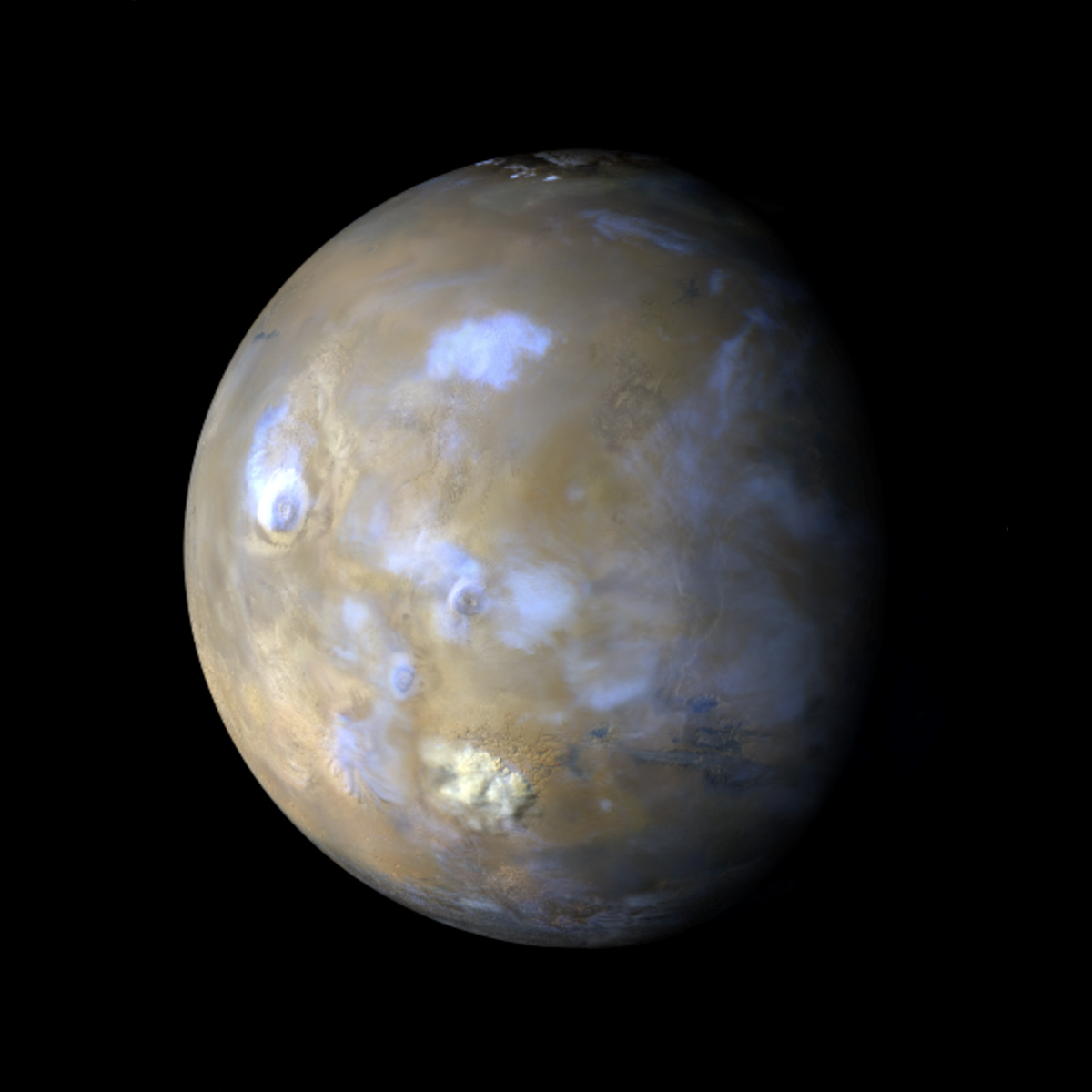Olympus Mons: Tallest volcano in the solar system, nearly three times the height of Mount Everest.
Valles Marineris: One of the largest canyons, over 4,000 kilometers long, up to 7 kilometers deep.
Origin: Mars formed about 4.6 billion years ago, around the same time as Earth and the rest of our solar system, from a cloud of gas and dust.
Discovery: Mars has been known since ancient times, and it is one of the five planets visible to the naked eye from Earth. It has been observed and studied for thousands of years.
History: Mars has been a subject of fascination and study for centuries. Many ancient cultures observed and recorded its movements in the sky. In more recent history, astronomers have used telescopes and, later, space probes to learn more about the planet.
Orbit Eccentricity: 0.094
Orbit Length: It takes Mars approximately 687 Earth days to complete one orbit around the Sun.
Rotation: Mars rotates on its axis, like Earth. It completes one rotation approximately every 24.6 hours.
Rotation Length: A day on Mars (sol) is about 24 hours, 39 minutes, and 35.244 seconds.
Length of Day: A day on Mars (sol) is about 24 hours, 39 minutes, and 35.244 seconds.
Length of Year: 687 Days
Escape Velocity: 5,03 km/s
Distance from Sun in AU (Astronomical Unit): 1.52AU
Spherical Specification: Mars is an oblate spheroid, meaning it is mostly spherical in shape but slightly flattened at the poles and bulging at the equator.
Moon/Natural Satellites: Mars has two small natural satellites, Phobos and Deimos. They are irregularly shaped and are thought to be captured asteroids.
Rings: Mars does not have any rings.
Gravity: 0.38
Mass: Mars has a mass of about 0.107 times that of Earth.
Composition/Structure:
- Crust: Mars' crust is primarily composed of basalt, a type of volcanic rock, along with various other minerals.
- Inner Core: Mars likely has a small, partially molten core made of iron and nickel.
- Outer Core: The outer core of Mars is thought to be in a partially molten state.
- Mantle: The mantle of Mars is composed of silicate rock.
Missions: There have been numerous missions to Mars conducted by various space agencies around the world. Some notable missions include the Mars rovers (e.g., Sojourner, Spirit, Opportunity, Curiosity, Perseverance) and orbiters (e.g., Mars Reconnaissance Orbiter, MAVEN).
Temperature: Temperatures on Mars can vary greatly. On average, surface temperatures range from about -80 degrees Celsius (-112 degrees Fahrenheit) in the winter at the poles to 20 degrees Celsius (68 degrees Fahrenheit) in the summer months near the equator.
Magnetic Field: Mars does not have a global magnetic field like Earth, but it does have localized magnetic fields in certain regions.
North Pole: The North Pole of Mars is located at approximately 68.8 degrees north latitude and 234.5 degrees east longitude.
South Pole: The South Pole of Mars is located at approximately 81.3 degrees south latitude and 311.8 degrees east longitude.
Geological Environment/Activity: Mars shows evidence of past volcanic activity, and there are large shield volcanoes like Olympus Mons. There are also signs of ancient riverbeds, indicating the presence of liquid water in the past. Dust storms can be common on Mars, some of which can cover the entire planet.
Atmosphere: The Martian atmosphere is thin compared to Earth's and is primarily composed of carbon dioxide (about 95.3%), with trace amounts of nitrogen, argon, oxygen, and other gases.
Size: Mars has a diameter of about 6,779 kilometers (4,212 miles), which is roughly half the size of Earth's diameter.



